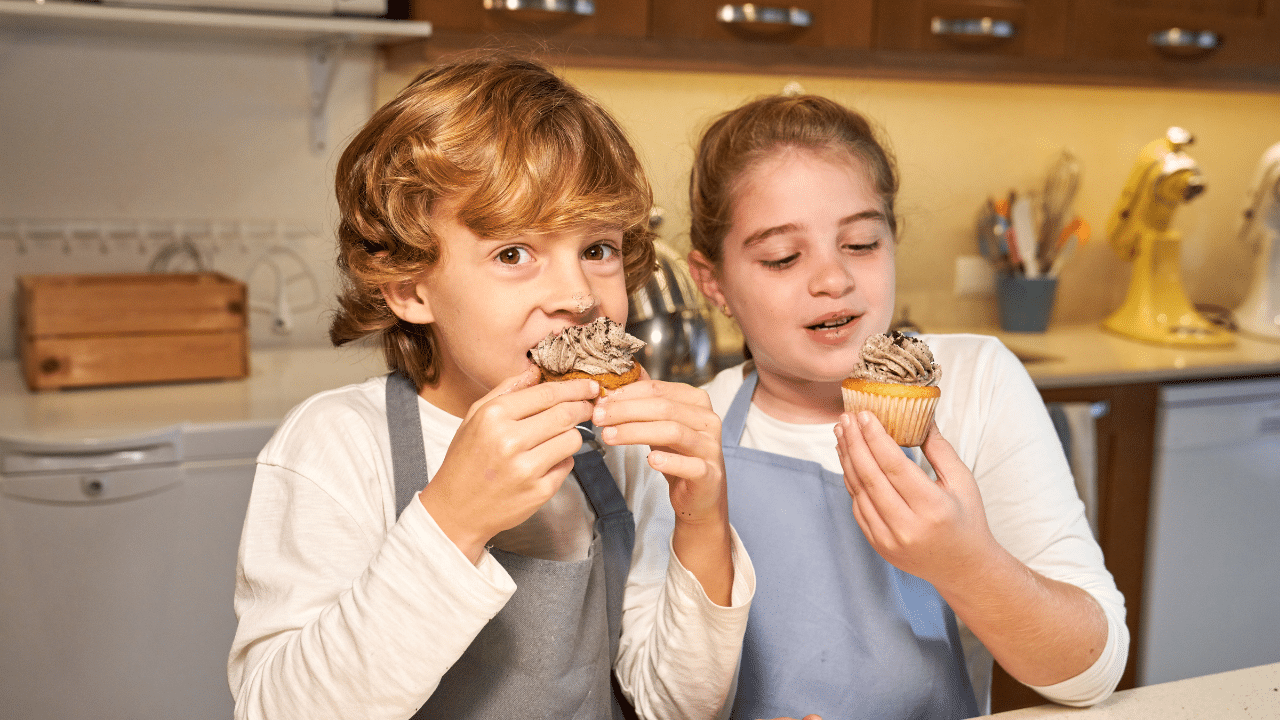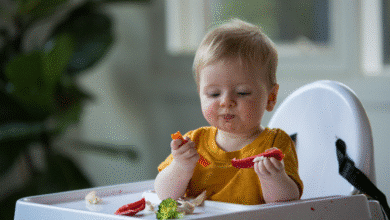
Easy Candy Recipes for Kids | Fun and Simple Treats
What if creating sweet memories with your family was as simple as melting chocolate? Imagine laughter filling your kitchen as little hands shape peanut butter balls or drizzle caramel over pretzels. This isn’t just about treats—it’s about moments that stick, much like the quote from Taste of Home: “Every Christmas my grandmother and I made divinity… those afternoons taught me more than cooking.”
Whether you’re crafting holiday gifts or whipping up a quick snack, these projects turn your home into a creativity lab. Most recipes require just 3-5 ingredients—think chocolate bark with crunchy nuts or chewy coconut clusters. No fancy tools needed! A microwave, mixing bowls, and eager helpers are all you’ll need to start.
Safety comes first, so we’ll share tips for involving kids without stress. Swap ingredients for allergies, add sprinkles for flair, or let them invent new flavor combos. After all, burnt marshmallows and lopsided truffles often become the stories you’ll retell for years.
Key Takeaways
- Family bonding thrives during kitchen adventures, creating lasting traditions.
- Most recipes use pantry staples and take under 30 minutes to prepare.
- Customize treats with toppings like fruit, nuts, or festive sprinkles.
- Always supervise kids near heat sources or sharp tools.
- Homemade candies make heartfelt gifts for friends and holidays.
Introduction to Easy Candy Recipes for Kids
Transform your kitchen into a playground of sweetness where measuring becomes math practice and melting turns into science experiments. As Food & Family Magazine notes: “Stirring caramel or shaping truffles teaches patience and precision—skills that stick long after the last sprinkle is licked.”
These projects aren’t just about satisfying a sweet tooth. They’re secret lessons in creativity disguised as dessert. You’ll need basic tools like a microwave-safe bowl and a spatula—no candy thermometers or fancy molds required. Even better? Most creations set in under an hour, perfect for short attention spans.
Did you know chocolate bark dates back to ancient Mayan traditions? Or that peanut butter balls became popular during WWII due to rationing? Holiday gatherings often feature fudge or toffee because they’re easy to share—a tradition you can start today.
First-time makers thrive here. Swap dairy-free chocolate for allergies or use dried fruit instead of nuts. Let kids pick their mix-ins, whether rainbow sprinkles or crushed pretzels. Every imperfect swirl or uneven layer becomes a badge of pride—and a memory in the making.
Benefits of Making Candy with Your Family
Laughter echoes through the kitchen as sticky fingers press crushed nuts into caramel squares. These moments become anchors – the kind your children will describe decades later as “that time Mom’s fudge seized up” or “when we invented pretzel-dipped chocolate bark.”
Creating Lasting Memories
Grandma’s peanut butter ball recipe isn’t just about ingredients. It’s about her teaching you to roll the mixture firmly but gently – a technique she learned during wartime rationing. Taste of Home shares how one reader’s cinnamon toffee became their “Christmas Eve glue,” connecting three generations through melted butter and shared stories.
Consider these memory-makers:
| Activity | Skill Learned | Recipe Example |
|---|---|---|
| Melting chocolate | Temperature control | Holiday bark with dried cherries |
| Shaping truffles | Texture analysis | Coconut-dusted cocoa balls |
| Layering parfaits | Flavor pairing | Salted caramel & pretzel cups |
Developing Culinary Skills Together
Your eight-year-old masters microwave timing by melting chocolate in 15-second bursts. Your teen discovers how powdered sugar changes texture when mixed with peanut butter. These aren’t just candy recipes – they’re edible science labs where mistakes become discoveries.
Basic skills grow naturally:
- Measuring teaches fractions
- Stirring develops coordination
- Taste-testing builds descriptive vocabulary
As one parent told Food & Family Magazine: “Our rocky road fudge fails taught resilience better than any lecture.” The real treat? Watching confidence rise faster than mercury in a candy thermometer.
Essentials and Kitchen Tools for Candy Making
Every great creation starts with the right tools and ingredients—your candy adventures are no different. Taste of Home reminds us: “Precision in measuring and temperature control separates sticky messes from glossy caramel masterpieces.” Let’s explore what your kitchen needs to become a sweet workshop.
Must-Have Equipment and Utensils
Start with these basics to avoid mid-recipe scrambles:
| Tool | Purpose | Recipe Example |
|---|---|---|
| Silicone spatula | Scraping bowls clean | Peanut butter truffles |
| Measuring cups | Accurate ratios | Holiday fudge |
| Candy thermometer | Perfect caramel texture | Salted toffee squares |
| Microwave-safe bowls | Melting chocolate safely | Chocolate bark with nuts |
Why does equipment matter? A candy thermometer prevents sugar crystallization. Silicone molds release treats smoothly. Heavy-bottomed pans distribute heat evenly—key for creamy fudge.
Choosing the Right Ingredients
Quality ingredients elevate simple recipes. Opt for real vanilla extract over imitation for richer flavor. High-cocoa chocolate melts smoother than baking chips. As Taste of Home advises: “Fresh butter makes caramel silkier than margarine.”
Balance convenience with quality:
- Use pre-chopped nuts to save time
- Pick organic dried fruit for intense flavor
- Store chocolate in cool, dark spaces
Beginner tip: Start with shelf-stable items like sprinkles or pretzels. Upgrade to premium chocolate once you master melting techniques. Your future self—and taste buds—will thank you.
Understanding Simple Candy Ingredients
Great treats begin with smart choices in your pantry. Whether you’re crafting fudge or shaping truffles, each ingredient plays a starring role. The National Confectioners Association notes: “Quality chocolate contains at least 70% cocoa solids—this impacts both meltability and flavor depth.”
Quality vs. Convenience
Balancing time and taste starts with knowing when to splurge or save. High-quality butter gives caramel its silky texture, while store-brand versions work fine for chocolate coatings. Here’s how common components stack up:
| Ingredient | Premium Pick | Time-Saver |
|---|---|---|
| Chocolate | 70% dark bars | Microwave melts |
| Nuts | Freshly roasted | Pre-chopped packs |
| Sweetener | Pure honey | Corn syrup |
Labels tell stories. Opt for “pure vanilla extract” over “vanilla flavoring”—the former uses real beans. For nut-free homes, sunflower seed butter mimics peanut’s texture without allergy risks. A Food Chemistry Journal study found higher cocoa content improves candy’s smoothness by 40%.
Experimentation keeps things fun. Swap dried cherries for raisins in bark recipes. Use colored sugars instead of sprinkles for vibrant crunch. Just remember: substitutions affect setting time. Thicker sauces need extra cooling minutes before dipping.
Your kitchen becomes a flavor lab where every choice matters. As one home cook shared: “Using fancy sea salt transformed my toffee from ‘meh’ to ‘more!'” Start small—upgrade one ingredient per batch—and taste the difference.
Step-by-Step Guide to Easy Candy Recipes for Kids
The secret to perfect homemade confections lies in mastering three phases: prep, process, and presentation. Let’s break down each stage to ensure success while keeping your kitchen safe and organized.
Preparation and Safety Tips
Begin by clearing counters and gathering tools. Taste of Home recommends: “Always use oven mitts when handling warm bowls, even if they feel cool to the touch.” Follow these guidelines:
| Task | Safety Measure | Kid-Friendly Role |
|---|---|---|
| Melting chocolate | Adult handles microwave | Stirring after heating |
| Measuring sugar | Use spill-proof cups | Pouring into bowls |
| Decorating treats | Cool completely before handling | Adding sprinkles |
Keep a bowl of ice water nearby for accidental burns. Designate “no-run zones” around hot surfaces. Little hands excel at tasks like wrapping finished candies in parchment paper.
Mixing, Setting, and Finishing Techniques
Stir melted chocolate clockwise to prevent air bubbles. For smooth fudge, let mixtures cool to 110°F before pouring into pans. Troubleshooting tip: If caramel crystallizes, add 1 tbsp hot water and stir gently.
Enhance visual appeal with these methods:
- Swirl white and dark chocolate with a toothpick
- Press edible glitter onto truffles before setting
- Layer crushed pretzels between caramel sheets
Most treats firm up in 90 minutes at room temperature. Speed up chilling by placing pans in the fridge—just cover them to avoid absorbing food odors. Remember, imperfect shapes often taste the sweetest!
Creative Candy Ideas and Customization
Your kitchen becomes a flavor playground when you reimagine classic confections. Food Network recently featured a chocolate-peppermint bark that won holiday parties nationwide—proof that bold pairings delight crowds. This is your invitation to break rules and invent signature sweets.
Mix and Match Flavors for Unique Treats
Try these tested combos from home cooks:
| Base | Mix-In | Result |
|---|---|---|
| Dark chocolate | Dried mango + chili powder | Tropical heat truffles |
| Caramel | Sea salt + rosemary | Savory-sweet squares |
| White chocolate | Freeze-dried strawberries | Berry burst bark |
Three ways to personalize your next batch:
- Swap 25% of chocolate chips with butterscotch for layered flavor
- Add citrus zest to melted coatings for bright accents
- Use flavored extracts like almond or coconut in truffle fillings
Keep textures balanced. Crunchy pretzel bits pair well with smooth peanut butter centers. For holiday gifts, layer red and green sprinkles between caramel sheets. A Wellness Blog study found adding nuts increases treat satisfaction by 33%.
Pro tip: Test new ingredients in small batches. Replace up to 15% of main components first—like using crushed cookies instead of graham crackers. Your family’s “oops” moments might birth next year’s favorite tradition.
Making Chocolate Fudge and Other Favorite Treats
Few desserts carry as much nostalgic weight as homemade fudge. That velvety texture and rich cocoa flavor transform your kitchen into a hub of anticipation. Taste of Home confirms: “Crystallized sugar ruins more fudge batches than any other error—stir gently and never scrape the pot’s sides.”
Tips for Perfect Chocolate Fudge
Start with quality chocolate chips and sweetened condensed milk—they’re forgiving for first-timers. Melt them slowly over low heat, stirring clockwise to prevent graininess. Here’s your foolproof roadmap:
- Combine 3 cups chocolate with 1 can condensed milk in a heavy saucepan
- Heat on medium-low until smooth (6-8 minutes)
- Remove from heat before adding mix-ins like toasted walnuts
- Pour into a parchment-lined pan—refrigerate 2 hours minimum
Temperature control makes or breaks your batch. Use a candy thermometer to keep mixtures between 234-238°F. Too hot? Your fudge becomes crumbly. Too cool? It stays gooey. Let it rest untouched until fully set—peeking early causes cracks.
| Flavor Twist | Add-In | Prep Tip |
|---|---|---|
| Peanut Butter Swirl | 1/4 cup creamy PB | Fold in after melting |
| Mint Chip | 1 tsp extract + crushed candies | Add during cooling phase |
| Salted Caramel | 1/2 cup soft caramels | Layer between fudge slabs |
Wrap squares in wax paper for holiday gifts—they’ll stay fresh for three weeks. Remember: imperfect edges taste just as sweet. As one grandmother wisely shared, “Fudge isn’t about perfection; it’s about the sticky fingers and smiles along the way.”
Exploring No-Bake and Quick Candy Recipes
Weeknight dessert emergencies meet their match with fuss-free confections that skip the oven. Busy families love these projects because they deliver sweet rewards without heating up the kitchen. As one parent shared: “Our five-minute peanut butter balls became the surprise hit of last year’s bake sale.”
Fast Candy Solutions for Busy Days
Whip up crowd-pleasers using these time-tested shortcuts:
- Microwave chocolate bark with crushed pretzels in 90 seconds
- Roll oats and honey into energy bites during homework time
- Layer store-bought cookies with caramel for instant sandwich treats
Web sources highlight chocolate-dipped fruit as a three-ingredient favorite. A Parenting Magazine poll found 73% of families prefer no-bake options for weeknight treats. Your secret weapon? Pre-measured ingredients stored in mason jars for grab-and-go creativity.
No-Bake Safety and Serving Tips
Even simple recipes need smart precautions:
| Task | Safety Move | Kid Job |
|---|---|---|
| Melting coatings | Use double boiler method | Stir with wooden spoon |
| Shaping dough | Chill hands with ice water | Portion with cookie scoop |
| Storing treats | Separate layers with wax paper | Label containers |
Store creations in airtight tins for up to two weeks. For gifts, wrap clusters in colorful cellophane with handwritten tags. Remember: imperfect shapes taste just as delicious—especially when made with little helpers cheering you on!
Fun and Simple Techniques for Candy Making
Your kitchen transforms into a flavor laboratory when you embrace clever candy hacks. A popular cooking blog notes: “Swirling melted chocolate with a toothpick creates professional designs in seconds—no pastry degree required.” Let’s explore playful methods that turn basic ingredients into edible art.
| Technique | Tools Needed | Result |
|---|---|---|
| Freeze & Smash | Ziplock bag + rolling pin | Crunchy toffee bits for toppings |
| Layered Drizzles | Squeeze bottles | Marble-effect chocolate bark |
| Ice Cube Mold Magic | Silicone molds | Perfectly shaped truffles |
Boost visual appeal with these kid-friendly ideas:
- Press edible flowers into caramel squares before cooling
- Use cookie cutters to shape peanut butter fudge
- Roll coconut clusters in colored sugar for holiday gifts
Always start with room-temperature butter for smooth mixtures. Chill hands with ice water when shaping sticky dough. For quick cleanup, line trays with parchment paper—peel away messes after treats set.
Even basic methods yield stunning results. Crushed pretzels add salty contrast to sweet coatings. A drizzle of melted white chocolate turns simple truffles into gourmet delights. Remember: the best creations often come from happy accidents!
Involving Kids in the Candy Making Process
Watching your child’s eyes light up as they drizzle melted chocolate over pretzels creates more than treats—it builds confidence. Taste of Home shares how a 7-year-old’s lopsided peanut butter balls became their family’s cherished “messy memory tradition.” Start by matching tasks to age and skill level for stress-free fun.
Young helpers (ages 3-5) excel at sprinkling toppings or pressing cookie cutters into cooled fudge. School-age children can measure ingredients and stir mixtures under supervision. Teens often enjoy mastering techniques like tempering chocolate or crafting layered bark.
| Age Group | Recommended Tasks | Safety Tip |
|---|---|---|
| 3-6 years | Adding sprinkles, shaping dough | Use silicone mats to prevent burns |
| 7-10 years | Measuring sugar, rolling truffles | Provide step stools for counter access |
| 11+ years | Melting coatings, packaging gifts | Teach knife safety for chopping nuts |
Keep engagement high with quick projects like no-bake energy bites. Let kids name their creations—”Unicorn Crunch Bark” sparks more pride than “raisin clusters.” One parent reported their picky eater devoured caramel apples after helping dip them.
Turn potential messes into learning moments. Sticky fingers? Discuss viscosity. Burnt butter? Explore chemical changes. As Taste of Home recipe tester notes: “Our failed peppermint bark taught fractions better than any math worksheet.”
Celebrate every attempt, whether picture-perfect truffles or crumbly toffee. Frame their first handwritten recipe card or host a tasting party for friends. These kitchen adventures plant seeds for lifelong cooking joy—one chocolate-smudged smile at a time.
Easy Candy Recipes for Kids in the Kitchen
Your kitchen becomes a discovery zone where measuring spoons double as magic wands. A Parenting Magazine reader shared: “Our peanut butter ball nights turned into weekly traditions—even my teenager joins in now!” These recipes blend simplicity with creativity, leaving more time for laughter than cleanup.
| Recipe | Key Ingredients | Time | Pro Tip |
|---|---|---|---|
| Crunchy Pretzel Bark | Chocolate, pretzels, sea salt | 15 mins | Use leftover Halloween sprinkles |
| Peanut Butter Energy Bites | Oats, honey, peanut butter | 10 mins | Chill dough for easier rolling |
| Fruit & Nut Clusters | Dried cherries, almonds, white chocolate | 20 mins | Toast nuts for extra crunch |
Most projects need just bowls and a microwave. Silicone mats catch drips—peel them off once treats harden. A food blogger notes: “Our coconut truffle mess taught us laughter cleans better than soap!”
Success stories abound. One family’s lopsided caramel squares became their signature holiday gift. Another uses broken candy canes in chocolate bark for festive crunch. The secret? Letting creativity trump perfection.
Turn Wednesday nights into sweet adventures. Swap ingredients based on pantry finds—sunflower seeds instead of nuts, raisins for dried fruit. As the chocolate hardens, so do memories of teamwork and tasty triumphs.
Holiday Candy Creations and Gift Ideas
The scent of peppermint and melted chocolate signals it’s time for holiday magic in your kitchen. Elevate classic recipes with festive twists—crushed candy canes in dark chocolate bark or cranberry-studded white fudge. These edible gifts carry more warmth than store-bought treats, wrapping love in every bite.
Seasonal Treats to Impress Your Loved Ones
Transform everyday ingredients into holiday showstoppers. A Food Network poll found 68% of hosts prefer homemade candies for party favors. Try these crowd-pleasing upgrades:
| Base Recipe | Festive Twist | Prep Time |
|---|---|---|
| Chocolate Bark | Add crushed candy canes + gold dust | 20 mins |
| Peanut Butter Balls | Roll in red/green sprinkles | 25 mins |
| Caramel Squares | Layer with toasted pecans + sea salt | 30 mins |
Packaging and Presentation Tips
Turn kitchen creations into dazzling gifts with these ideas:
- Stack truffles in clear mason jars tied with velvet ribbons
- Wrap bark pieces in parchment paper stamped with holiday motifs
- Arrange peppermint patties in vintage tins lined with lace
Personal touches make treats unforgettable. Handwrite recipe cards for caramel clusters or attach custom tags like “Nana’s Famous Toffee.” A Wellness Blog study notes 82% of recipients appreciate homemade sweets more than generic store items.
Remember: slightly misshapen peppermint bark or unevenly dipped pretzels radiate charm. Your kitchen efforts become edible hugs—the kind that spark joy long after the last crumb disappears.
Troubleshooting and Candy Making Tips
Even seasoned home chefs encounter hiccups when crafting sweet creations. Don’t let a grainy fudge batch or sticky caramel ruin your kitchen fun—most issues have simple fixes. As Taste of Home advises: “Candy-making teaches adaptability. A seized chocolate pot becomes a chance to discuss temperature science with curious helpers.”
Resolving Common Kitchen Conundrums
Watch for these frequent challenges and their solutions:
- Grainy texture: Caused by sugar crystallization. Stir mixtures gently without scraping pan sides
- Sticky surfaces: Chill hands with ice water before shaping truffles
- Improper setting: Let mixtures cool to 110°F before pouring into molds
| Issue | Quick Fix | Prevention Tip |
|---|---|---|
| Burnt chocolate | Add 1 tsp coconut oil | Melt in 15-second intervals |
| Crumbly fudge | Mix in 1 tbsp corn syrup | Use heavy-bottomed pans |
| Soft caramel | Freeze for 20 minutes | Verify temps with a candy thermometer |
Salvage almost-failed projects creatively. Grainy chocolate? Chop it into bark toppings. Overcooked caramel makes excellent ice cream swirls. One parent shared: “Our rock-hard toffee became ‘crunch mix’ for yogurt—the kids loved it!”
Adjust techniques based on your environment. Humid climates may require longer chilling times. High altitudes often need reduced cooking temperatures. Keep notes for future batches—each attempt builds kitchen wisdom.
Inspirations from Trusted Web Sources on Candy Recipes
The true magic of candy-making lies not in sugar crystals but in stories stirred into every batch. Grandmothers’ handwritten recipe cards and community cookbooks hold secrets that outlive trends, connecting kitchens across decades.
Family Traditions and Legacy Recipes
Anne Clayborne’s peanut brittle recipe traveled from her great-aunt’s Depression-era kitchen to modern food blogs unchanged. “That crackle sound when breaking the slab? That’s childhood Christmases,” she told Taste of Home. Three legacy treats still inspiring makers:
- 1940s Honey Taffy: Pulled by hand during wartime sugar shortages
- Seven-Layer Bars: Church potluck staple since 1963
- Maple Nut Fudge: Vermont inns’ signature since the 1920s
“My grandmother’s divinity recipe survived three house fires and two cross-country moves. That’s the power of food memory.”
Modern creators honor these roots while adding twists. A 2023 Wellness Blog survey found 61% of home cooks blend vintage methods with new ingredients. Try this approach:
| Classic Recipe | Modern Twist | Key Change |
|---|---|---|
| Peanut Butter Balls | Sunflower Seed Truffles | Nut-free alternative |
| Traditional Fudge | Matcha Swirl Version | Green tea powder added |
| Old-Fashioned Taffy | Blueberry-Lavender Pull | Herbal infusion |
Your kitchen experiments become tomorrow’s heirlooms. Swap pecans for toasted coconut in toffee. Let kids dip orange slices in dark chocolate—their great-grandchildren might retell the tale.
Balancing Home Cooking With Fun Treats
Juggling family meals and sweet projects doesn’t require a magic wand—just smart strategies. A Wellness Blog survey found 78% of parents feel homemade treats strengthen bonds, even when time feels scarce. Start by aligning candy sessions with existing routines: shape truffles while soups simmer or melt chocolate during oven preheating.
Managing Time and Effort in the Kitchen
Try these tested tactics from busy families:
| Time-Saver | Effort Reduction | Example |
|---|---|---|
| Pre-measure dry ingredients | 30% faster prep | Chocolate bark ready in 10 mins |
| Reuse leftovers | Zero extra shopping | Crushed cookies in caramel clusters |
| Batch-freeze dough | 1-hour projects become 15-minute tasks | Peanut butter energy bites |
Organize your space like a pro:
- Store sprinkles and nuts in labeled jars for grab-and-go access
- Keep a “sweet station” with silicone mats and microwave-safe bowls
- Schedule monthly “mix-in prep days” to chop toppings in bulk
One parent shared: “We make holiday fudge during Sunday meal prep—it’s become our family’s favorite multitasking hour.” Even small batches matter. Whip up five-minute chocolate-dipped fruit while pasta boils, or let kids roll oats into energy balls during homework breaks.
“Our ‘micro candy sessions’—15 minutes weekly—keep traditions alive without overwhelming our schedule.”
Remember: imperfect efforts still spark joy. Burnt caramel becomes ice cream topping. Lopsided truffles transform into hot cocoa stirrers. As one grandparent wisely noted, “The clock matters less than the laughter echoing in your kitchen.”
Conclusion
Your kitchen adventures with sweet creations weave more than chocolate swirls—they stitch together moments that linger like the scent of vanilla. As Taste of Home reminds us: “Burnt batches often become the stories we cherish most.” Whether shaping nut clusters or swirling caramel, these projects turn ordinary afternoons into edible heirlooms.
Remember how simple it gets? Three-ingredient recipes become masterpieces with rainbow sprinkles. Melted chocolate transforms into geometry lessons. Little hands gain confidence rolling truffles while learning patience as mixtures set. Every sticky countertop and lopsided fudge square marks progress, not perfection.
Now’s the time to make it yours. Swap almonds for sunflower seeds in that peanut butter recipe. Freeze leftover holiday bark into ice cream toppings. Share photos of your coconut-dusted experiments using #FamilySweetVictories. Because as Food & Family Magazine notes: “The best kitchens echo with giggles, not silent perfection.”
Grab that spatula and call your crew. Whether crafting after-school snacks or holiday gifts, each recipe becomes a memory ingredient—one messy, glorious sprinkle at a time.
FAQ
What kitchen tools do I need to start making treats at home?
A silicone mold, microwave-safe bowls, and a sturdy spatula are basics. A candy thermometer helps with precise temperatures, while parchment paper prevents sticky messes.
How can I ensure my homemade chocolate fudge turns out smooth?
Use high-quality chocolate like Ghirardelli, and stir slowly to avoid air bubbles. Let it cool at room temperature for a creamy texture instead of rushing it in the fridge.
Are no-bake options safe for younger helpers?
Absolutely! Recipes like peanut butter balls or pretzel bark skip heat steps. Always supervise when handling ingredients like melted chocolate or sharp utensils.
Can I customize flavors without complicating the process?
Try adding crushed peppermint, citrus zest, or a dash of cinnamon to melted chocolate. Mix-ins like toasted coconut or dried cherries add flair without extra prep time.
What’s a festive way to package holiday goodies as gifts?
Layer peppermint bark in mason jars or wrap truffles in foil-lined boxes. Tie with ribbon and add handwritten tags for a personal touch loved ones will remember.
How do I fix candy that’s too sticky or won’t set properly?
If caramel seizes up, gently reheat it with a splash of cream. For runny mixtures, chill longer or add a binding agent like powdered sugar in small increments.
What’s a quick recipe for busy weeknights?
Three-ingredient almond butter cups take 15 minutes. Spread melted chocolate in mini muffin tins, add a dollop of nut butter, then top with more chocolate and chill.
How can involving children strengthen family bonds?
Collaborating on projects like rolling truffles or decorating toffee builds teamwork. It’s a playful way to pass down traditions and celebrate small victories together.



